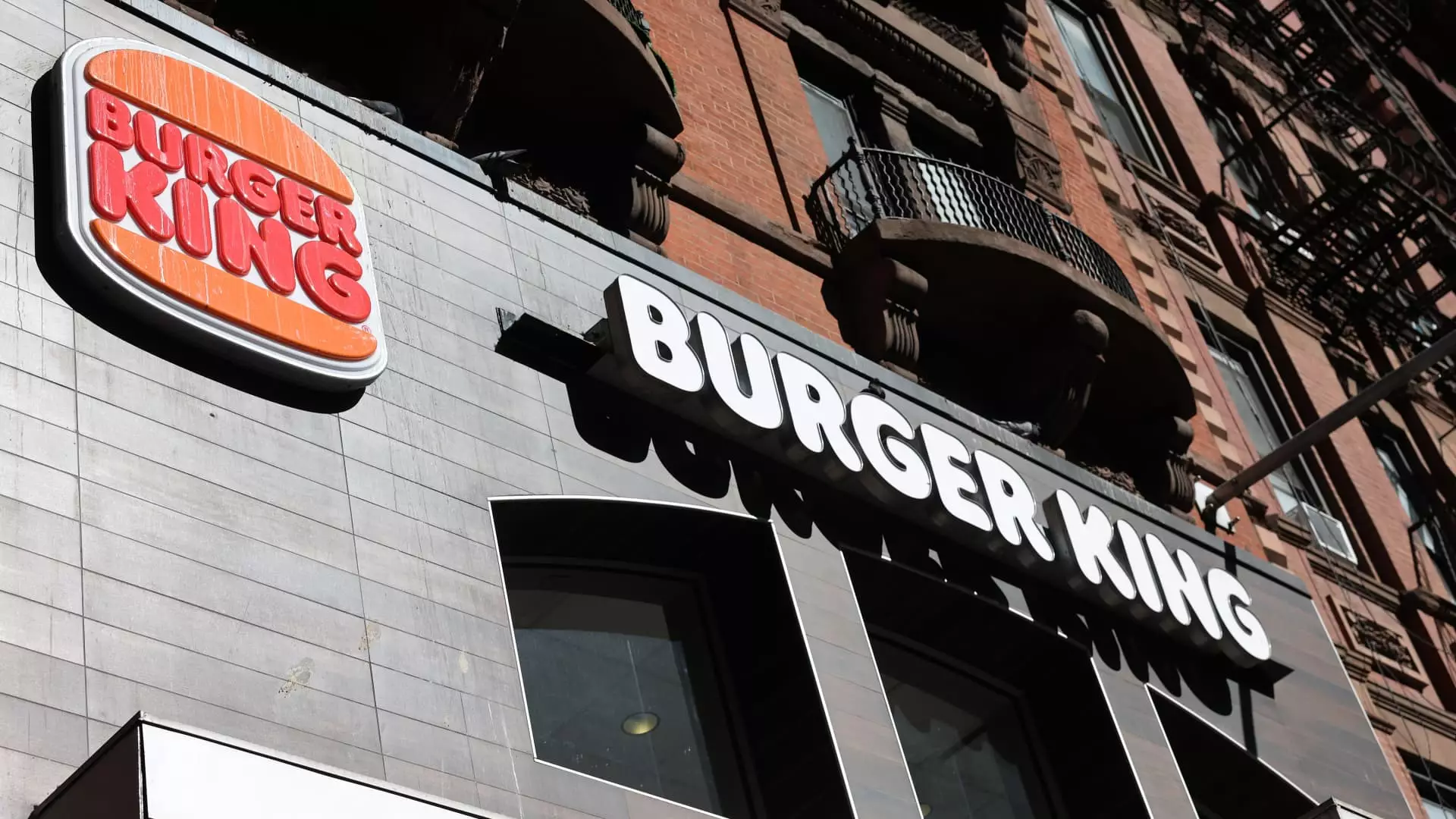Recent earnings announcements from Restaurant Brands International (RBI) expose vulnerabilities that cannot be overlooked. The company reported adjusted earnings per share of 75 cents—three cents short of Wall Street’s forecast. Such discrepancies in quarterly earnings illustrate mounting pressures on the fast-food giant, a glaring reality amplified by a disappointing revenue report of $2.11 billion, falling short of the anticipated $2.13 billion. These financial misses have incited a 2% decline in premarket trading, painting a bleak picture for the company’s future as consumer sentiment in the restaurant industry continues to wobble.
Stalled Growth Amid Busy Avenues
Despite an overall net sales increase of 21%, it’s essential to dive deeper into the specifics. The so-called growth has largely been driven by the acquisition of brands like Firehouse Subs and an uptick in Popeyes sales, but these numbers mask the troubling trend of same-store sales across the trio of flagship brands—Burger King, Tim Hortons, and Popeyes. In fact, the overall same-store sales growth of a meager 0.1% is overshadowed by the significant declines from these major players, sending alarming signals to investors and consumers alike.
Consumer Caution and Market Conditions
The backdrop of this fiscal calamity includes adverse weather conditions and cautious consumer spending habits. Economic headwinds have impacted foot traffic at fast-food establishments. The decline in same-store sales is telling—a 1.3% drop for Burger King and a staggering 4% fall for Popeyes bespeak a worrisome shift in consumer preferences as diners seem less inclined to splurge on fast food. Tim Hortons, a brand synonymous with coffee breaks and convenience, did not escape the trend, reporting its first decline in same-store sales in a quarter while expectations leaned favorably.
A Desperate Turnaround or a Slow Fade?
What does it indicate when a company that once revelled in its fast-food empire is now grappling with the prospect of a turnaround? For more than two years, Burger King’s recovery strategy has not yielded the anticipated results, evidenced by a consistent decline in its U.S. same-store sales. The challenges they face are not merely operational; they are structural, reflecting a need for substantial reevaluation of their marketing and operational strategies to rejuvenate customer interest.
The Specter of Innovation Dwindling
With advancements in food technology and more nimble competitors entering the fray, RBI is at a crossroads. It risks becoming a monument to outdated practices, catering to an audience that is becoming increasingly savvy and health-conscious. The absence of compelling innovations undermines the brand’s ability to attract new customers, particularly millennials looking for quality and sustainability over convenience. If RBI cannot develop fresh, appealing offerings that resonate with modern sensibilities, the restaurant titan may soon find its empire crumbling.
In a fast-evolving marketplace, the perilous state of Restaurant Brands International necessitates urgent action. The warning signs are illuminating; whether RBI responds with necessary changes or chooses to operate in denial will define its trajectory in the coming quarters.

Leave a Reply